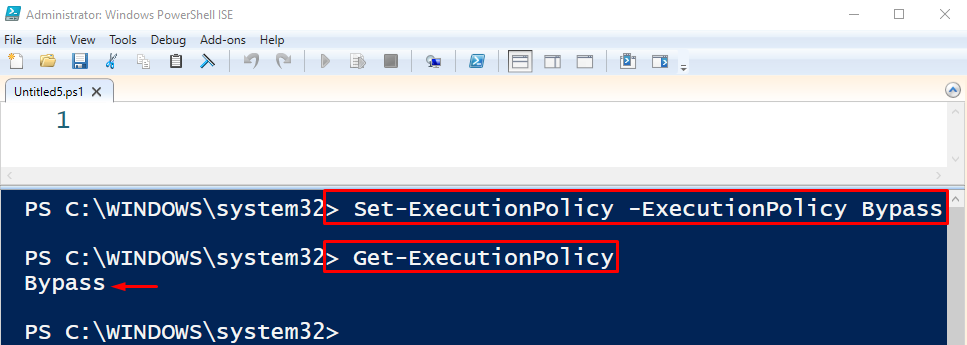In this post, PowerShell’s “Bypass” execution policy will be elaborated.
Windows PowerShell Policy Execution Bypass
As stated above, when the “Bypass” execution policy is enabled, it eliminates all the restrictions that were stopping the script from executing in PowerShell.
Examples of enabling the “Bypass” execution policy in PowerShell are given below.
Example 1: Set the Execution Policy to “Bypass” for the PowerShell Console
This demonstration will enable the “Bypass” execution policy in PowerShell:
Let’s verify, whether the execution policy was enabled or not by executing the below command:
Example 2: Set the Execution Policy to “Bypass” for the PowerShell ISE
This example will enable the “Bypass” execution policy in the PowerShell scripting:
Get-ExecutionPolicy
Example 3: Set the Execution Policy to “Bypass” for a PowerShell Script
In this example, the “Bypass” execution policy will be enabled for a specific script file:
According to the above code:
- First, write out the “powershell.exe” cmdlet followed by the “Get-ExecutionPolicy” cmdlet.
- After that, add the “-ExecutionPolicy” parameter and then assign it the “Bypass” value.
- Lastly, specify the path of the script to enable the “Bypass” execution policy:
That was all about setting the “Bypass” execution policy in PowerShell.
Conclusion
Windows PowerShell policy execution bypass is the process to enable the “Bypass” execution policy for the specific script or console. The “Bypass” execution policy is used to lift all the restrictions to execute scripts from anywhere. This post has elaborated on PowerShell’s execution “Bypass” policy with several examples.




